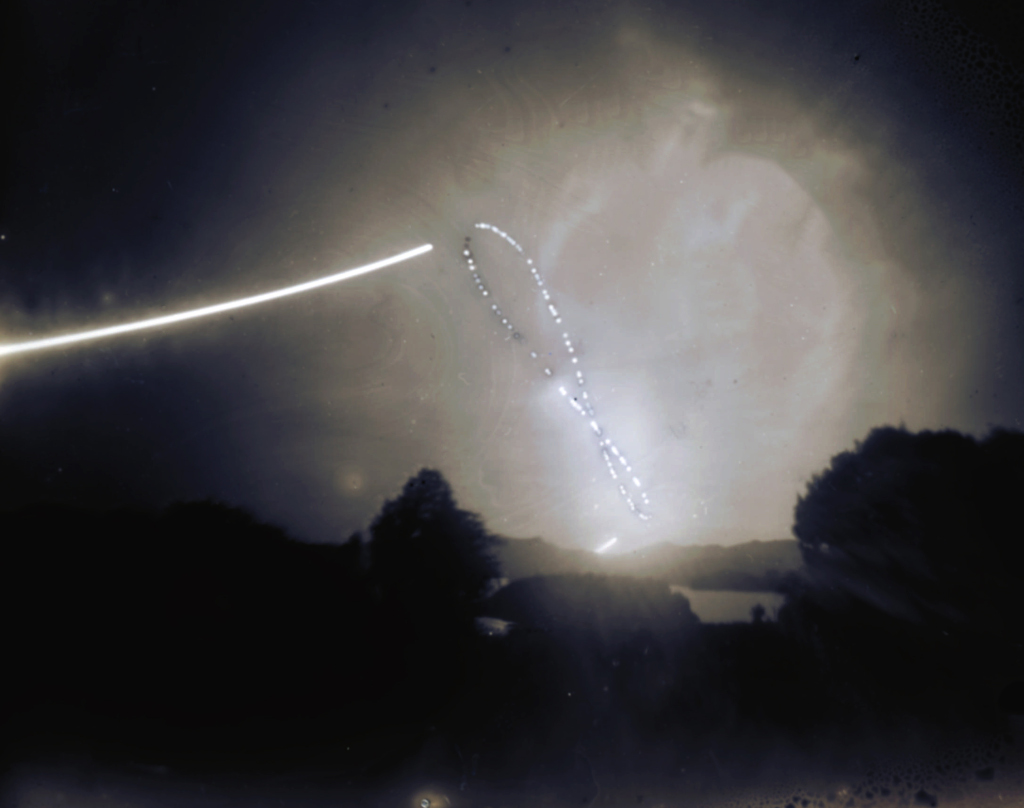2023年9月23日
Afternoon Analemma
Image Credit & Copyright: Ian Griffin (Otago Museum)
Explanation: An analemma is that figure-8 curve you get when you mark the position of the Sun at the same time each day for one year. To make this one, a 4×5 pinhole camera was set up looking north in southern New Zealand skies. The shutter was briefly opened each clear day in the afternoon at 4pm local time exposing the same photosensitized glass plate for the year spanning September 23, 2022 to September 19, 2023. On two days, the winter and summer solstices, the shutter was opened again 15 minutes after the main exposure and remained open until sunset to create the sun trails at the bottom and top of the curve. The equinox dates correspond to positions in the middle of the curve, not the crossover point. Of course, the curve itself is inverted compared to an analemma traced from the northern hemisphere. And while fall begins today at the Autumnal Equinox for the northern hemisphere, it’s the Spring Equinox in the south.
Tomorrow’s picture: sunrise solar eclipse
南半球下午的日行迹
影像提供与版权: Ian Griffin (Otago Museum)
说明: 日行迹是一整年之中,每天在同一时间记录太阳位置所建构出的8字形曲线。为绘制上面这幅日行迹,摄影者架设了一部4×5英寸的针孔相机,朝北仰望新西兰南岛的天空。然后在2022年9月23日到2023年9月19日的一整年之中,每个晴天当地下午4点短暂开启快门,曝光同一片光敏的玻璃板。只有在[北半球]冬至与夏至这二天,特地在主曝光的15分钟后,再次开启快门并维持到日落,以记录曲线顶端与底端的那二道日轨。得强调的是,春、秋分出现在日行迹的中间附近,而非在交叉点。很明显的,与记录于北半球的此类曲线相较,这道日行迹为倒置。另外,今天的秋分是北半球秋天的起点,而对南半球而言今天是春分。 (analemma 日行迹)
明日的图片: sunrise solar eclipse



